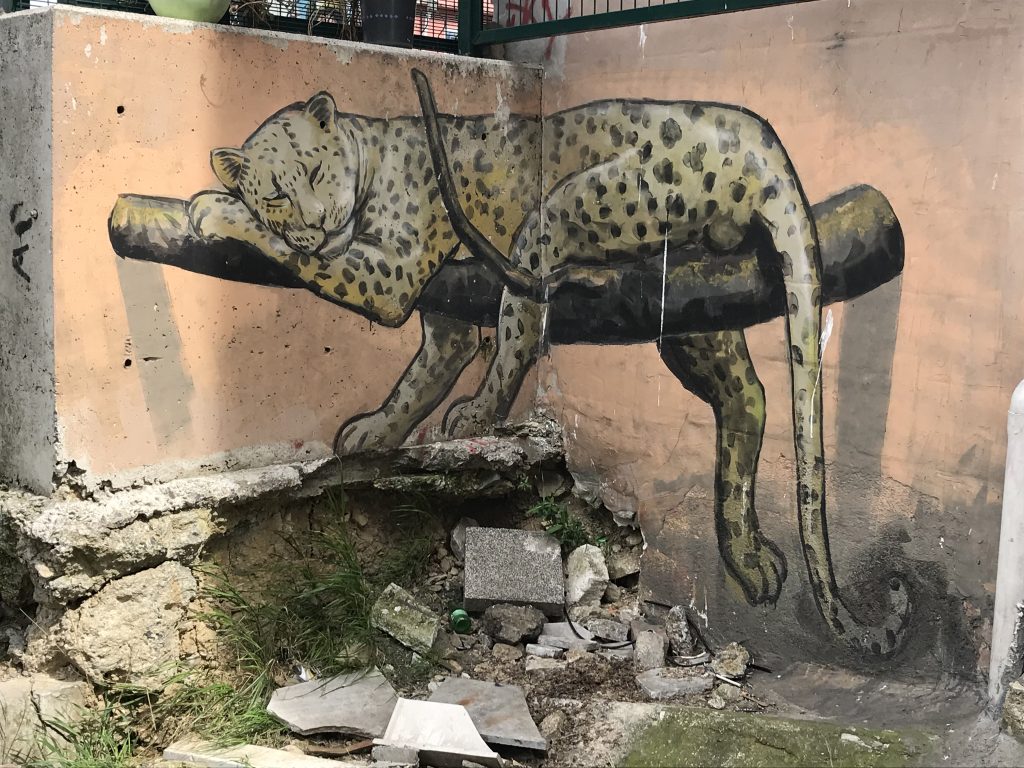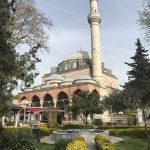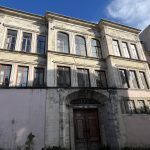“Windmill”
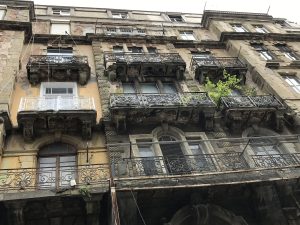
Yeldeğirmeni is the area on the Asian side of İstanbul that sits to the north of Kadıköy and just inland from Haydarpaşa station with whose history its development is intricately linked. Large numbers of men worked on the construction of the station from 1906 onwards and, since they often stayed for several years, apartment blocks, schools and churches sprang up to cater to their needs. In the 2010s Yeldeğirmen became a fashionable area to live in as young people moved out first of Cihangir on the European shore and then out of Kadıköy itself as property prices and rents soared ever higher. The result has been a flourishing of cafe culture and gigantic murals.
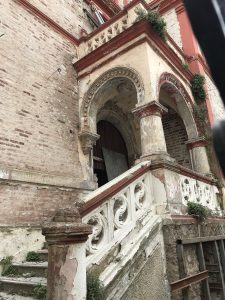
This is an area with quite a lot of grand late 19th and early 20th-century architecture, not all of it in a great condition. Start exploring by cutting up İskele Caddesi from the coast road )Rıhtım Caddesi). Eventually you will come, on the left, to the Valpreda Apartment block, built in 1909 to house Italian stone masons working on the station and so often known as the Italyan Apartment block.
Not far away is the derelict Osmangazi Primary School which started life in the early 1900s as a school for the children of the Germans working on the station. In 1918 when the work was complete it became an Ottoman English school and then in 1950 a state primary school. Right beside it is a chapel with a rare figurative statue in a niche on the outside.
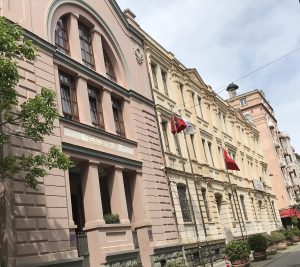
If you continue straight along İskele Caddesi past the intersection with Yeldeğirmen Caddesi you’ll come to the huge building that was once the Euphemie Notre Dame du Rosaire Church and the adjacent French Middle Schhol for Girls, built in 1895 by French Assumptionist missionaries. It ceased being a school in 1935 and at one point served as gym. Fully restored, it now serves as a concert hall and as the Kemal Atatürk Anadolu Lisesi (high school).
Continue along İskele Caddesi and turn right into Karakolhane Caddesi where some magnificent buildings sit unnoticed amid the coffee shops. Here too is the Agios Yeorgios Rum Kilise. Eventually the street ends at a junction marked by old millstones, presumably in memory of the lost windmills that gave their name to the area. Here, too, is a metal sculpture called Ayrışma (Separation), designed by sculptor İskender Giray to commemorate the journalist Nuh Köklü who was stabbed to death in an argument with a tradesman over a snowball in 2015.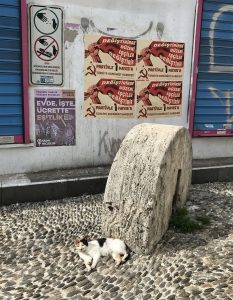
Transport info
Yeldeğirmeni is a shortish walk north from Kadıköy ferry terminal. Frequent buses from Üsküdar also pass the bottom of İskele Caddesi.
Nearby areas
